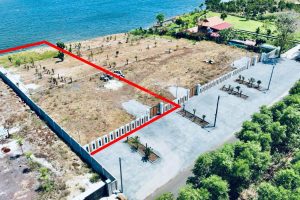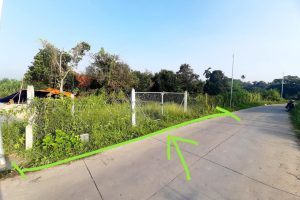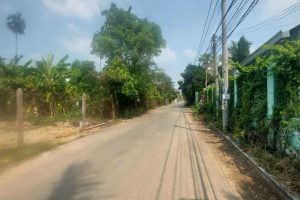Content
- Distinguish Between Job Costing And Process Costing
- The Top Financial Challenges Faced By Small Business And How To Overcome Them
- Plan Your Overhead Costs
- Process Vs Job Costing
- Timesheet Integrations
- Liquidity Management: How To Maintain Good Cash Flow And Mitigate Risk
- The Four Key Steps Of Assigning Costs
The total cost added in the process needs to be computed for different items of the material and the conversion cost. It can be assessed based on the expectation that how much effort is needed in order to complete the process of production.
Assigning these product costs to individual products remains an important goal for process costing, just as with job costing. However, instead of assigning product costs to individual jobs , process costing assigns these costs to departments . Manufacturing overhead often includes indirect materials, indirect labor, and the utilities used to run the production equipment. Each individual process has business costs allocated as goods enter into the production process. The costs are tracked until the goods leave the process and move through the production system.
Distinguish Between Job Costing And Process Costing
Each such division is a stage of production or process. The entity has provided the following information & wants to calculate the cost involved in each manufacturing step.
Job costing is used to determine the cost of the specialized job which is manufactured to meet the client’s specific need. Whereas Process Costing is used for standardized products are being produced. Job costing is a method of evaluating the cost of the tailor-made component, which is ascertained for each job.
The Top Financial Challenges Faced By Small Business And How To Overcome Them
Describe the four key steps shown in a production cost report assuming the weighted average method is used. Which types of companies use a process costing system to account for product costs? Provide at least three examples of products that would require the use of a process costing system. Kelley Paint Company uses the weighted average method to account for costs of production. Kelley manufactures base paint in two separate departments—Mixing and Packaging. The following information is for the Mixing department for the month of March. CThis must match total costs to be accounted for shown in Figure 4.5 “Summary of Costs to Be Accounted for in Desk Products’ Assembly Department”.
This month, Beginning WIP units are considered 0% complete. Jill can make changes in her production process by investigating the differences between actual costs and budgeted costs, a process referred to as variance analysis. Process costing allows you to monitor costs for products that are not in production yet , products that are partially completed , and goods that are ready for sale .
Plan Your Overhead Costs
The inventory accounts used for recording accounting entries of production are almost the same for both costing techniques. Both the costing systems use basic accounts like materials, work-in-progress (in the case of job costing; if any) etc. The job order costing requires more record keeping activities than process costing. This is because in job order costing all the relevant costs are allocated separately to individual jobs and as for every job a separate job card is maintained, the amount of entries increase. While in process costing all the costs are aggregated and compiled, because all the costs relate to a single process of production. After the aggravation, the cost is assigned to each product.
Clever desalinization of liters and liters of seawater – hortidaily.com
Clever desalinization of liters and liters of seawater.
Posted: Tue, 11 Jan 2022 13:24:44 GMT [source]
The total cost of production is divided among each process on a suitable basis. Direct & indirect costs assigned and accumulated to each process in the factory. Process costing is widely used in industries such as oil refining, food production, chemical processing, textiles, glass, cement and paint manufacture.
Process Vs Job Costing
Businesses use operating leverage to keep costs fixed when they expect extraordinary sales volume. Keeping costs fixed means that businesses can carry more of that revenue to net profit. The job estimate given to the customer won’t list the process costing profit as a line item. Instead, the dollar amount of profit is added to each cost category, and the total adds up to the $29,198 sales price. Your goal is to decide on a budgeted dollar amount of annual overhead cost for each cost category.
- And overhead costs are debited to Manufacturing Overhead as they are incurred.
- The dollar amount resulting from this calculation is allocated to each good produced by the process.
- Manufacturing overhead costs applied to products in the Molding department totaled $2,500.
- In a process cost system, the unit cost is total manufacturing costs for the period divided by the units produced during the period.
The are very helpful for calculating ABC cost allocations. Standardized formulae can be entered into a spreadsheet. When monthly information is entered, the formulae do all the math, and calculate the final cost allocations. Just in time inventory management systems have been widely used in the automotive manufacturing and assembly industry, as well as others. It is important to identify relevant and reliable cost drivers for different types of costs.
Timesheet Integrations
Process costing is appropriate for companies that produce a continuous mass of like units through series of operations or process. Also, when one order does not affect the production process and a standardization of the process and product exists. However, if there are significant differences among the costs of various products, a process costing system would not provide adequate product-cost information. Costing is generally used in such industries such as petroleum, coal mining, chemicals, textiles, paper, plastic, glass, food, banks, courier, cement, and soap. While the costing systems are different from each other, management uses the information provided to make similar managerial decisions, such as setting the sales price.
- The production cost report summarizes the production and cost activity within a processing department for a reporting period.
- In job costing, direct and indirect costs are assigned to all processes involved in one particular job.
- The concept of an equivalent unit can be applied to determine the number of full-time equivalent students at a school.
- Your next step is to decide on an activity level that causes you to incur each overhead cost.
- The only pre-requisite to exercise this system of process costing is to have a count of inventory and determine manufacturing overhead consumed by a process.
- The Coca-Cola Company is one of the world’s largest producers of nonalcoholic beverages.
As the factory labor payroll is prepared and recorded, the payroll costs are split between those employees who work in specific functions and those involved in the general functions of the factory. The specific function costs are called direct labor and are assigned to work‐in‐process inventory. The general factory labor costs are indirect labor costs that are added to factory overhead. Unlike the accounting for payroll under the job order cost system, the employee does not have to be physically involved in making a product to be assigned to a specific function. The accounting for the labor costs for June includes the following journal entries, shown in the following table. The first step in calculating process costing is to analyze the inventory by evaluating cost-flow of the inventory. During a 30-day period, the design department accumulates a total amount of $80,000 of direct costs for materials and resources and $100,000 of converted costs for labor and overhead costs.
The cost of direct labor in this department during March has only USD 30,000 and they complete the work for 12,000 pairs of shoes. Company ABC is manufacturing which specializes in shoe production, they mainly focus on the local market. The production needs to go through multiple processes which they called the departments. Here, we’ll learn the Top 30 Questions and Answers-Process Costing. It will undoubtedly assist you in gaining a basic understanding of process costing as well as assisting you in passing any competitive test.
For example, if a company started 1,000 units of product during the period and at the end of the period these were 40% completed, the equivalent units would be 400 (1,000 units × 40% complete). This calculation assumes that the materials, labor, and overhead are all added evenly throughout the time the units are in process in the function. In many companies, the materials are all added at the beginning of the process while the labor and overhead costs are incurred throughout the process. Labor and overhead are also called conversion costsbecause they “convert” the materials into a product.
Assembly Department—Month of May The company had 3,000 units in beginning WIP inventory; all were completed and transferred out during May. Soap Production Company’s Mixing department shows the following information for the 1,000 units of product remaining in work in process at the end of the period. Figure 4.3 “Concept of Equivalent Units” provides an example of the equivalent unit concept in which four desks, 50 percent complete, are the equivalent of two completed desks.
Conversion costs include the direct labor and manufacturing overhead for each production process. Work-in-process represents the incomplete equivalent units from the previous month. Only 100 percent complete equivalent units will be assigned full process cost. When a company has units that are started and completed during a period and has an ending inventory of units in process, most often the weighted average method is used to calculate equivalent units. If needed, based on the company’s production processes, separate calculations of equivalent units for materials and conversion costs are made.
The Four Key Steps Of Assigning Costs
Calculate the equivalent units in the Assembly department for direct materials and direct labor. Calculate the equivalent units for each of the three product costs—direct materials, direct labor, and overhead. Use the format presented in Figure 4.2 “Flow of Product Costs in a Process Costing System” (no need to include T-accounts for raw materials inventory, wages payable, or manufacturing overhead).
Each Sierra shirt is allocated overhead for the building lease, and other items, totaling $10 per shirt. Jill’s staff runs machinery to cut the cotton fabric, sew each shirt, and to package the shirts once they are completed. Susie may also list all of her overhead as a single dollar amount on the customer’s job estimate. Gino Wickman, an author and business consultant, finds this lack of control as a common frustration with entrepreneurs. Gaining control over your business requires time, and there’s often not enough hours in the day. This method is slightly more complex since it may not always be feasible to compute the degree of completion in case of unfinished goods. For freelancers and SMEs in the UK & Ireland, Debitoor adheres to all UK & Irish invoicing and accounting requirements and is approved by UK & Irish accountants.
Accounting For Finished Goods
The normal loss is absorbed by the cost of good units. The cost of production per unit is the average cost, which is obtained by dividing the total process cost by the total number of units manufactured. To determine the average cost per unit for the period, the total cost of each process is divided by the total production. Your Applied overhead costs include any cost that cannot be directly assigned to a cost object, such as rent, administrative staff compensation, and insurance. But these costs are not directly a part of the costs explicit only to this project – they are costs relevant to the general operation of the business rather than one job. So, you will need to estimate just how much of these overhead costs need to be applied to this project in particular.
What is process costing PDF?
❑Process costing is a method of operation costing which is used to ascertain the. cost of production at each process, operation or stage of manufacture, where. processes are carried in having one or more of the following features: ❑Where the product of one process becomes the material of another process or.
Lựa chọn thanh toán
(*)Vui lòng tải về file tiến độ thanh toán để xem đầy đủ hơn. Xin cảm ơn!





